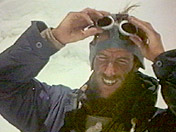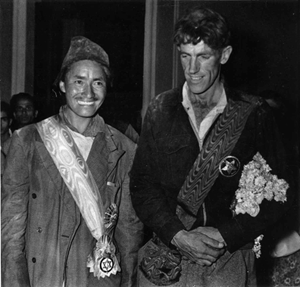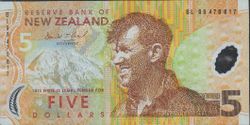Sir Edmund Hillary: Conqueror of Everest
January 12, 2008 Hillary was born on July 20, 1919, in Tuakau, a city south of Auckland. A shy boy, he grew up reading books and dreaming of great things. He wasn't a natural athlete, but he discovered that he great stores of natural endurance. In climbing, he found his lifelong love.
Following in his father's footsteps, Edmund Hillary became a beekeeper. After a stint with the New Zealand Air Force during World War II, he turned his focus to climbing mountains. Hillary was part of a British expedition to Mount Everest in 1951, two years before his successful ascent. Much like the early Apollo space missions that gathered information for the eventual Neil Armstrong walk on the moon, these early expeditions were opportunities to see the terrain on the world's tallest mountain and also gauge how well climbers would respond to the freezing, thin-air conditions.
Not long after the ascent of Everest, Hillary got married. He and his wife, Louise, had three children. Sadly, his wife and one of his children were killed in a plane crash in Nepal in 1975. Hillary married again, to a woman named June, in 1989. She survives him, as does his son, Peter, who climbed Mount Everest with Norgay's son Jamling in 2003. Survivors also include six grandchildren. He eventually climbed 11 peaks that are 20,000 feet or higher. He eventually did other amazing things, like traveling to the South Pole by tractor and leading the first jet boat expedition up India's Ganges River. He was New Zealand's ambassador to India for a time. After his ascent of Mount Everest, Hillary held Nepal in quiet awe. He traveled there more than a hundred times, helping bring food and supplies to the people there. An outgrowth of his efforts is the Himalayan Trust. Among his accomplishments through this Trust were getting built schools, hospitals, and even airfields. He was so popular in Nepal that the people there took to calling him burra sahib, which means "big man." He was 6-foot-2.
His likeness appears on the New Zealand 5-dollar bill. |
|
Social Studies for Kids
copyright 2002–2024
David White



 His first major climb was to the summit of Mount Oliver, in New Zealand's beautiful Southern Alps. He was 20. His interest in climbing was just four years old, having been sparked on a school trip to Mount Ruapehu, the active volcano that dominates the central landscape of the country's North Island.
His first major climb was to the summit of Mount Oliver, in New Zealand's beautiful Southern Alps. He was 20. His interest in climbing was just four years old, having been sparked on a school trip to Mount Ruapehu, the active volcano that dominates the central landscape of the country's North Island. The successful ascent took place two years later. Hillary and Sherpa Tenzig Norgay (left) became the first two people to set foot on "the top of the world," on May 29, 1953. They spent just 15 minutes at the top, after climbing for days. Then, they focused on getting back down safely. Drifting snow had covered their tracks, making for a sometimes treacherous descent. They arrived safely back at civilization, however, and announced their feat to the world.
The successful ascent took place two years later. Hillary and Sherpa Tenzig Norgay (left) became the first two people to set foot on "the top of the world," on May 29, 1953. They spent just 15 minutes at the top, after climbing for days. Then, they focused on getting back down safely. Drifting snow had covered their tracks, making for a sometimes treacherous descent. They arrived safely back at civilization, however, and announced their feat to the world. Hillary wrote several books in his lifetime, including High Adventure (about the Everest ascent), The Crossing of Antarctica, and his autobiography, Nothing Venture, Nothing Win.
Hillary wrote several books in his lifetime, including High Adventure (about the Everest ascent), The Crossing of Antarctica, and his autobiography, Nothing Venture, Nothing Win.
